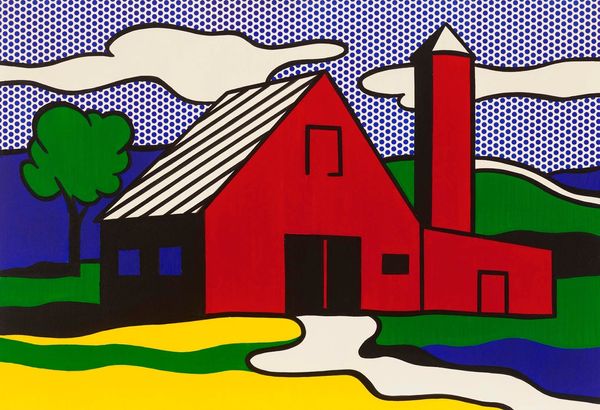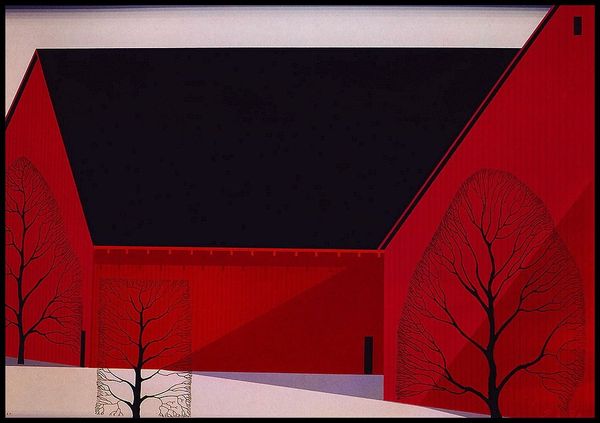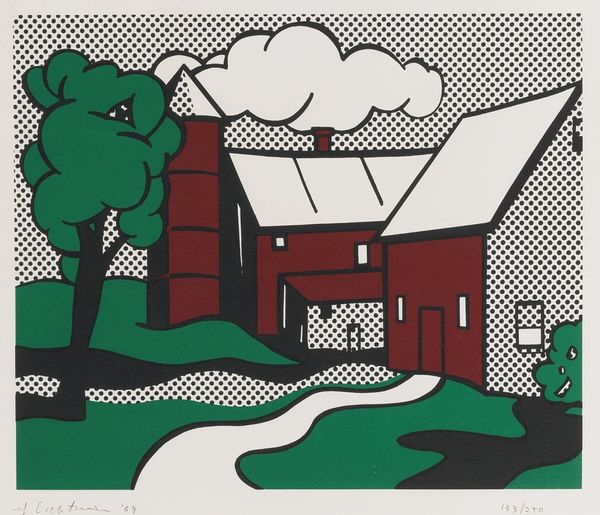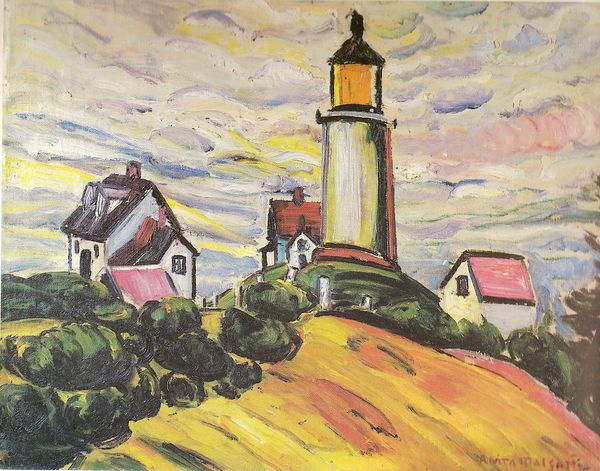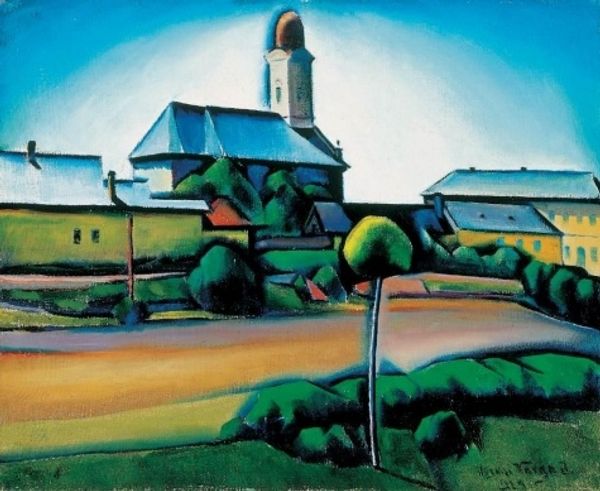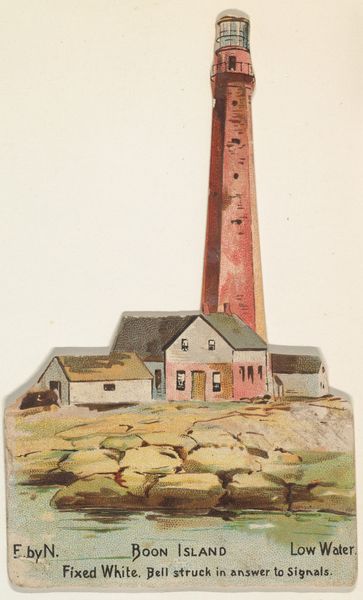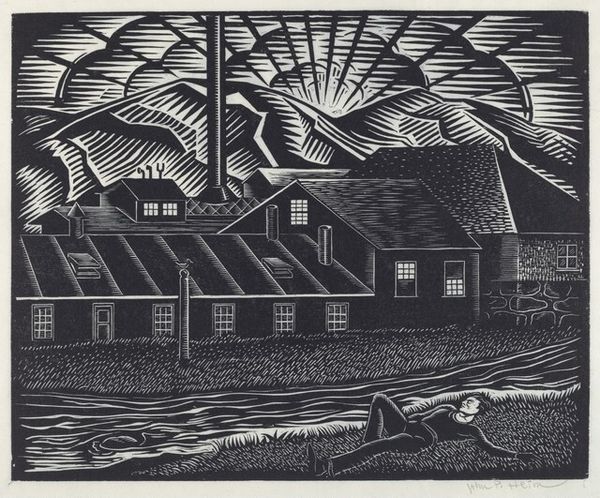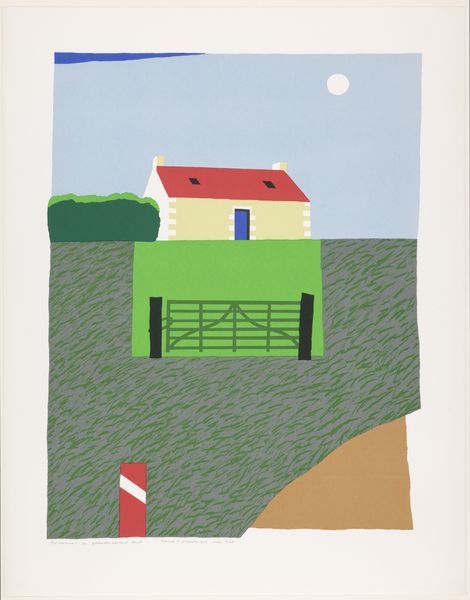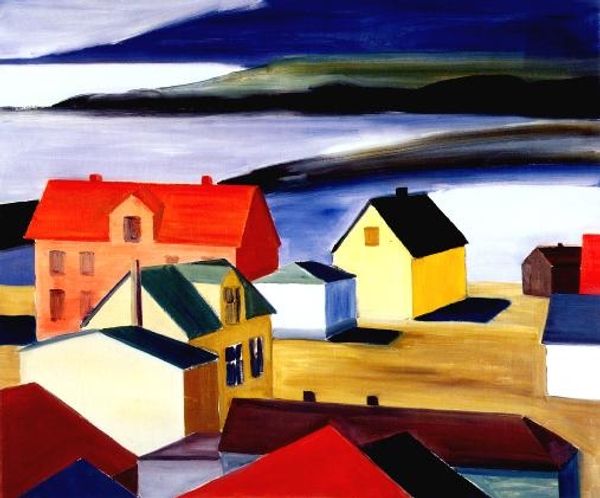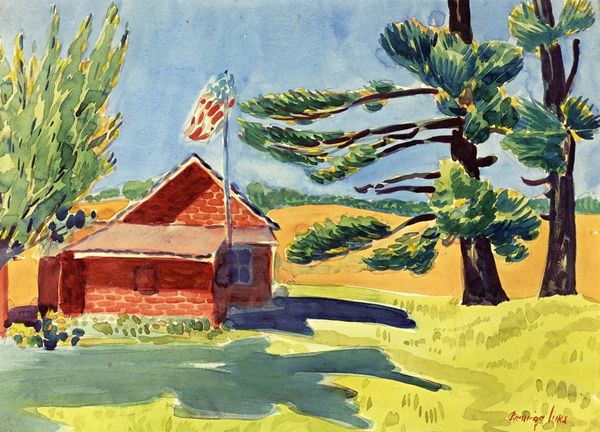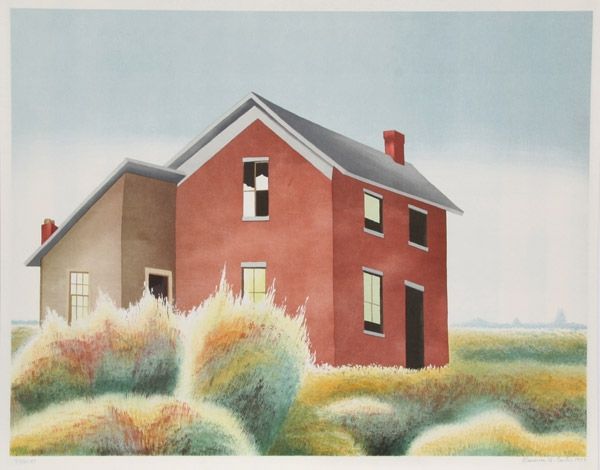
painting, acrylic-paint
#
painting
#
landscape
#
pop art
#
acrylic-paint
#
geometric
#
pop-art
Dimensions: 111.8 x 142.2 cm
Copyright: Roy Lichtenstein,Fair Use
Editor: This is Roy Lichtenstein’s "Red Barn II," created in 1969 using acrylic paint. The large, simplified shapes and bold colours really strike me, especially the almost cartoonish representation of the rural landscape. What immediately stands out to you? Curator: The formal aspects of "Red Barn II" are intriguing. Consider the relationship between the Ben-Day dots and the flat planes of colour. Note that Lichtenstein appropriates a visual language—the mass-produced printing process—and applies it to a traditional genre, landscape painting. Observe how this juxtaposition impacts the overall composition. Editor: So you’re focusing on how he uses this mechanical style to depict something quite traditional? Curator: Precisely. It’s the tension between the medium and the subject matter that's compelling. The geometric simplification reduces the barn to its basic components. Think about the effect that creates. Does it enhance or diminish the rustic quality of the barn? Editor: It definitely makes it feel more modern and less sentimental, like he’s commenting on how even rural scenes are being mass-produced as images. I hadn’t considered how the dots themselves contribute to that feeling. Curator: Indeed. Reflect on how his precise execution contrasts with the organic shapes, especially the rolling hills and the suggested snow cover, which creates visual discord. The Ben-Day dots simulate texture and shading, paradoxically rendering a two-dimensional image with a sense of depth. Editor: I see that now! Looking closely at the painting, it feels like the dots add a layer of abstraction. I had never really noticed that before! Thank you for sharing your expertise on this piece. Curator: My pleasure. Through this formal analysis, hopefully, we see not just what is depicted but how its essence emerges through the artful arrangements of elements and pictorial techniques.
Comments
No comments
Be the first to comment and join the conversation on the ultimate creative platform.
